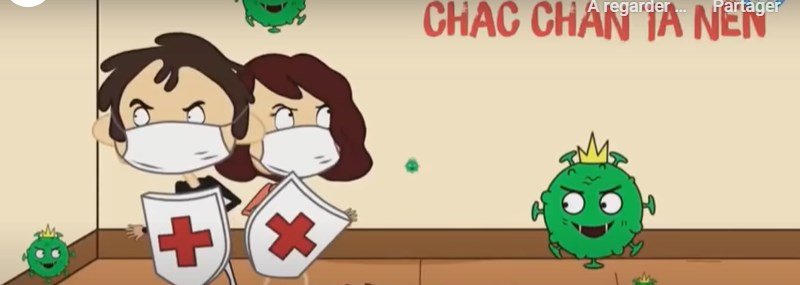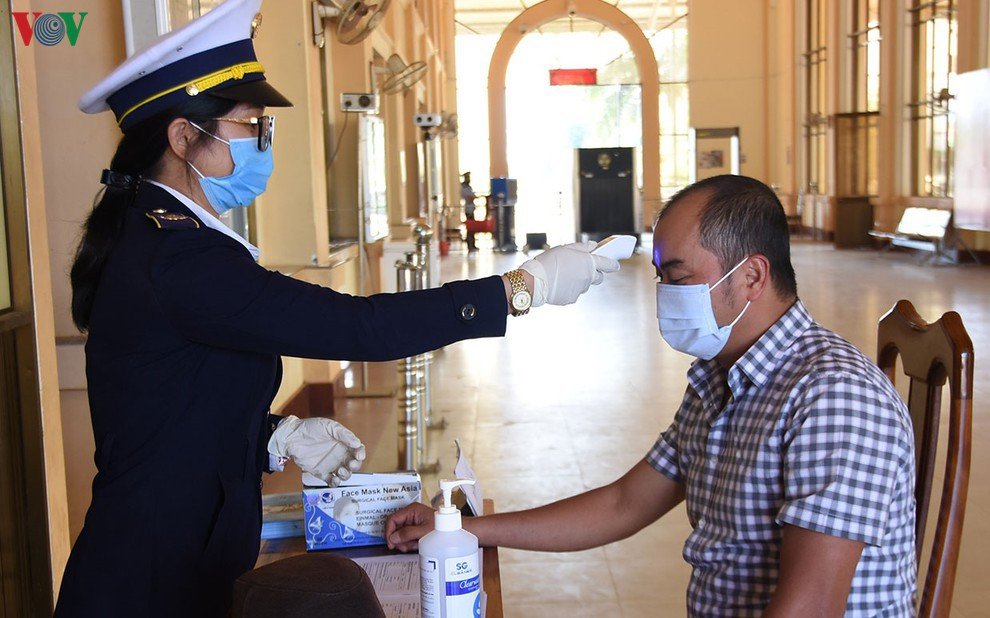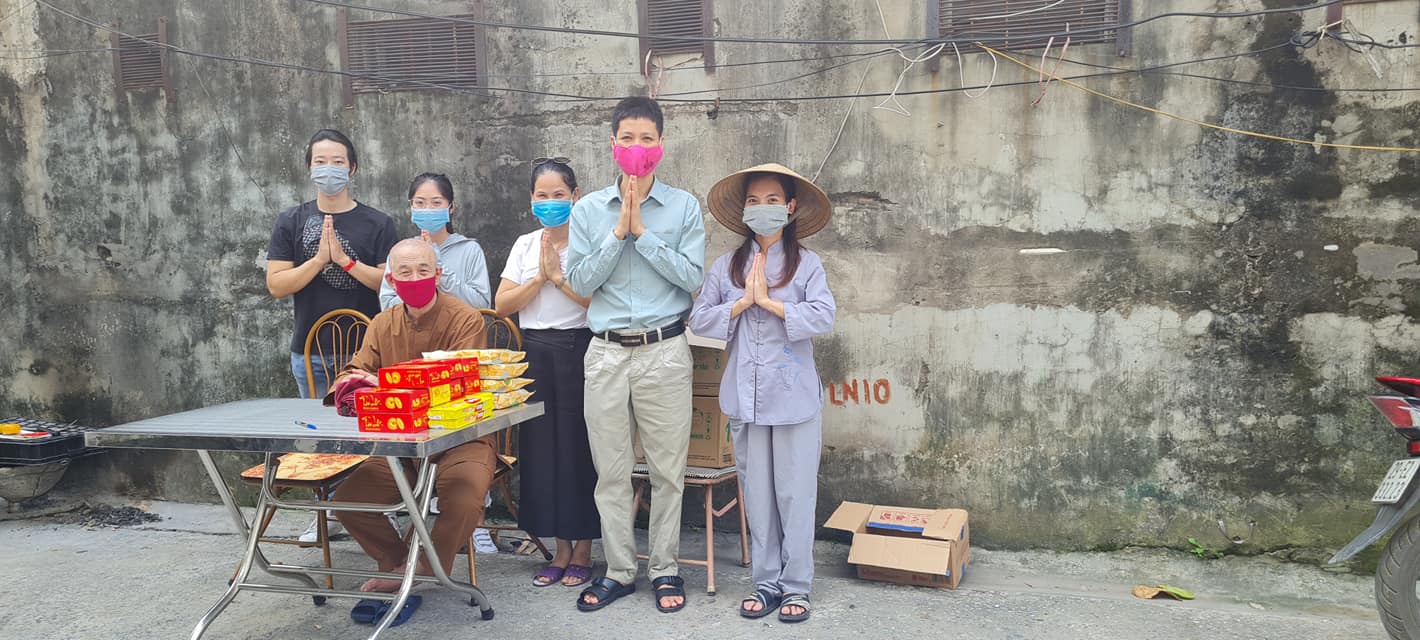The year 2020 will undoubtedly be remembered for the pandemic of the new coronavirus that has ravaged the whole world. what about the COVID-19 crisis management in Vietnam?
It is true to say that no country could be insensitive to the health and economic impacts of this gigantic crisis. On the other hand, the effects and consequences have been different for each nation. We will talk to you in this article about the management of the COVID-19 crisis in Vietnam, which, like a small village of Gauls irreducible to know how to cope with the arrival of the invader…

Summary
Declaration of the virus in China, Vietnamese reaction
From the first beginnings of the epidemic in early 2020, on January 9, the threat was taken seriously by the Vietnamese government. The proximity to China and the experience of the previous SARS outbreak in 2003 made the situation of particular concern to the Vietnamese.
The first case of COVID-19 in Vietnam was reported on January 23, 2020. A week after the first case was confirmed, Vietnam formed a national steering committee to coordinate Vietnam’s “whole-of-government” strategy against the outbreak, initially meeting every other day.
At the beginning of the year, 16 cases of contamination are proven, mainly linked to a group of workers returned from Wuhan to their relatives.
To prevent the spread of the epidemic, Vietnam closed its border with China on February 1 and quickly suspended the opening of schools.
First local quarantine
In Vinh Phuc, a northern province about an hour’s drive from Hanoi, provincial leaders confined a commune called Son Loi, isolated patients and their close contacts in quarantine camps for at least 14 days, and activated community-wide testing from the first community spread.
The second wave of cases was discovered on 6 March; these cases were imported from new clusters such as Europe, Great Britain and the United States. The day after the first case of the second wave was detected, the government tracked and isolated about 200 people who had close contact, lived on the same street or were on the same flight from London as the patient.
Communication and prevention policy
As a result, the Vietnamese population is made aware of a threat to their health. information is relayed everywhere: Television, social networks, signs… It is recommended to wear the mask and practice increased hygiene. All this is taken very seriously, masks are often worn voluntarily and spontaneously in companies and in public places.
An anti-covid song becomes viral and symbolic of Vietnam’s fight against the virus: Link

The cultural advantage of Vietnam is that the demonstrations of friendships are not physical: We say hello by voice and there is no physical contact. It is the same for the mask, the population is used to wearing it, so the adaptation is done for the best.
A controlled but threatening epidemic
In March the situation is still worrying, especially after the declaration of a new case in Hanoi which leads to a series of infections. Some neighbourhoods are cordoned off to limit the spread of the Virus.
The policy of tracing, testing, and isolating is carried out effectively. Quarantines are strict and controlled.

On March 22, Vietnam closed its borders and blocked all international flights.
Even if Vietnam has only a few cases per day, the country has finally placed itself in generalized confinement since the beginning of April. Indeed, a generalized epidemic would be a disaster for the country and the hospital system would quickly be damaged.
After 15 days of general confinement of the country, and at the end of seven consecutive days without new cases of coronavirus, Vietnam begins on April 22 to ease the containment measures. Businesses, non-essential services and street vendors can resume operations, but gatherings of more than 20 people remain prohibited.
May, June, and July, no new local transmission
For three months no local transmission is reported. Access to the territory remains prohibited to foreigners, except, with the prior authorization of the Vietnamese authorities. Diplomatic and embassy staff, experts or highly qualified workers and their families, and students with an obligation to carry out a 14-day quarantine upon arrival.
Life inside Vietnam is therefore normal without any particular restriction.
New cases in Danang
At the end of July 2020, a dozen cases were confirmed in Danang without being able to identify the origin.
With an average of about thirty cases per day, the situation is becoming very worrying. On July 31, Vietnam recorded its first death related to Covid 19.
On July 28, authorities in Da Nang declared a 15-day quarantine of the city. Many cases throughout the country with epidemiological factors related to Da Nang are detected.
The measures are proving effective since the beginning of September no more cases have been reported.
Once again the country allows itself to live normally and safely. However, the country remains closed internationally, closely observing the evolution of the world situation in order to be able to reopen the borders.
the number of cases reported as of 31 December 2020 is only 1505 cases. 35 people have died from the virus.
The hope of the Vaccine
As the dawn of 2021 hopes for an end to the pandemic arrives, Vietnam is also preparing.
Human trials of Nanocovax, the first Covid-19 vaccine in Vietnam developed by Nanogen Pharmaceutical Biotechnology JSC, began in January 2021. Two men and a woman in their twenties getting vaccinated at the Vietnam University of Military Medicine in Hanoi. This vaccine, which is planned at a lower cost and can be stored at non-extreme temperatures, is planned for the end of 2021.
In parallel, Vietnam, in the Covid 19 Crisis Management Vietnam ordered in January 2021 at least 30 million doses of the COVID-19 vaccine. It is developed by AstraZeneca with the University of Oxford. The vaccination campaign is planned to be spread throughout the year.
28 January: New alert and upsurge in cases
On 28 January, when the country has not seen any local transmission for nearly 100 days, many cases were reported.
The third wave of infection began on January 28, 2021, with Vietnam recording another 84 cases of community transmission in a single day in Hai Duong and Quang Ninh provinces. Most of them are linked to a single migrant worker Hai Duong, who was diagnosed with the British coronavirus variant by Japanese authorities after arriving in Osaka on January 17.
Initially, the government only quarantines areas directly linked to those infected to limit the economic impact. But after half a month, the number of cases was still rising, so on February 15, the entire province of Hai Duong is locked for 15 days while Hanoi and Ho Chi Minh City stopped all entertainment activities.
On 7 March 2021, the outbreak in the northern provinces appears to have been largely brought under control when the number of new cases fell to single digits. Along with this, Vietnam began its mass vaccination campaign against COVID-19 the next day.
This period marks the largest case report, bringing the number to 2570 on March 19, 2021.
The release of vaccination
The COVID-19 vaccination program in Vietnam began on March 8, 2021, administering the AstraZeneca vaccine to medical workers in Hanoi, Ho Chi Minh City and Hai Duong Province.
The vaccines come from the WHO-led Vaccines Global Access (COVAX) initiative, created primarily to secure supplies to developing countries. Việt Nam, as an eligible beneficiary, is expected to receive 30 million doses throughout 2021.
The fourth wave
At the end of April and the beginning of 2021, while the country was experiencing a calm period without the appearance of new local cases for more than a month, a new alert is unfortunately pronounced. New cases are rapidly occurring, first in the province of Bac Giang and Bac Ninh, then in many parts of Vietnam. The two largest cities Hanoi and Ho Chi Minh are also affected.
Quickly measures are taken to close public places, such as sports halls and terraces, and restrictions are taken locally depending on the severity of the situation.
The outbreak is taking on an unprecedented scale in the country with a peak of more than 400 cases on May 25. The average daily case now stands at 200/300 cases per day at the end of May and the beginning of June. Drastic measures are being taken throughout the country with the closure of all so-called non-essential restaurants and businesses. Hanoi and Ho Chi Minh airports are closed internationally.
The country recorded new deaths bringing the death toll to 47.
This epidemic wave is associated with a heatwave linked to the arrival of summer. staff fighting the virus, responsible for testing, controlling contacts, and managing quarantines is extended. But he shows energy and determination that offers hope.
This new breakthrough of the virus highlights the importance of vaccination to control the epidemic. On June 1, Vietnam vaccinated only 1% of its population of 98 million. The government is trying to speed up orders and deliveries of vaccines. the country aims to get 150 million doses of the Covid-19 vaccine this year to cover 70% of its population, achieving herd immunity by the end of this year, according to the Ministry of Health
Early June
The fourth wave is the longest and most serious ever recorded. Many decisions are being made to contain the epidemic
Ho Chi Minh City goes into semi-lockdown. The number of domestic flights to HCMC is limited to 63 per day until June 14.
In parallel the hunt for the Vaccine continues The Ministry of Health confirms the purchase of 20 million doses of the Russian vaccine Sputnik V for 2021, bringing the total number of imported doses negotiated over the year to 119.9 million
On June 0, Vietnam has surpassed 8,000 cases since the beginning of the pandemic. The National Committee for the Prevention and Control of Covid-19 proposes to the Minister of Health to reduce the quarantine from 21 days to a week for people vaccinated and tested negative from abroad.
On June 11, Vietnam announced the 50th death since the beginning of the pandemic.
After AstraZeneca and Sputnik V, Vietnam authorizes the use of a third vaccine, that of the Chinese Sinopharm.
The Minister of Health announces that he is in negotiations to import and produce doses of the American vaccine Johnson & Johnson.
Start of mass vaccination
With an epidemic present but nevertheless mastered the popular demand press to access vaccination. However, there are not yet doses for everyone. Japan’s delivery of 1 million doses allows large-scale vaccination to begin on June 19, 2021.
July 2021
Vietnam is now experiencing “a rapidly spreading epidemic” with up to 9,000 cases per day. Clusters are found in various health facilities with at least ten major hospitals in the country locked in. The disease has spread to many provinces of Vietnam, there are outbreaks in the same locality at the same time but from a few other sources of infection, making it “almost impossible” to trace and cut the chain of infection.
According to the WHO, to prepare for a worse situation, the country has built another 30 field hospitals with a scale of 1,500 intensive care beds and 30,000 non-ICU beds. When the total number of cases reached a few thousand a day, the central government decided to confine the entire southern region with 35 million people and the capital Hanoi to contain the spread.
the results of gene sequencing show that lineage B.1.617.2 (Delta variant) is the dominant variant in this wave, especially among cases in localities in central and southern Vietnam.
On July 26, 2021, for the first time in the country’s disease prevention history, Ho Chi Minh City imposed a daily curfew from 6:00 p.m. As a result, no one is allowed to leave the city and only emergency services are allowed to operate.
The glimmer of hope is the vaccines that are starting to arrive and the campaign that finally seems to be accelerating.
On July 30, 2021, 128,000 cases of Covid were recorded and 863 deaths. 5.5% of the population received the first dose of the Vaccine and less than 1% both doses. All of Vietnam is waiting for better days…
September and October 2021
After more than two months of partial or complete confinement depending on the location and an epidemic that continued to progress, the trend is finally reversing. The number of cases is falling and vaccination is well underway.
During these two months, the Vietnamese people tried to show solidarity, we ourselves carried out some actions to distribute food to those who needed it most.

From the beginning of October, the lockdown eases in Vietnam and especially in Hanoi where outdoor activities are again allowed. This is an opportunity for the locals to resume their favourite morning activity!
This event, combined with the mild and pleasant climate of autumn, gives balm to the heart of all Vietnamese. A wind of hope is blowing again!
On October 10, there were 3500 cases of covid, the lowest figure in more than 2 months. The percentage of the first dose of vaccine is 40 per cent.
From mid-October, some inter-provincial travel is again possible and domestic flights are gradually resuming.
Online map of identified cases
An online map is available to know the number of cases by region in Vietnam:



